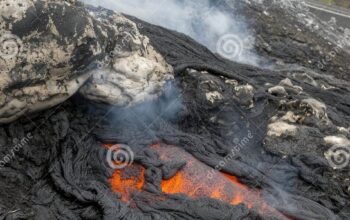The advent of the Internet of Things (IoT) has heralded a new epoch in technology, offering profound implications for environmental management and sustainability. This interconnected web of devices, capable of capturing and transmitting data, reveals insights that were previously unattainable. As we delve into the myriad ways in which IoT technology can benefit the environment, we unveil not just a series of innovations but an ideological shift that could redefine our relationship with the natural world.
Initially, the concept of environmental stewardship has often been perceived through a lens of restraint and limitation. However, IoT technology offers a transformative lens through which we can observe that sustainability can also mean optimization—harnessing intelligent data to foster ecological equilibrium rather than merely enforcing strictures. The ability of IoT devices to facilitate real-time monitoring and analytics engenders a paradigm shift, inviting society to view environmental challenges as surmountable through innovation.
One of the most palpable manifestations of IoT’s potential lies in its application to energy management. Smart grids are emblematic of this technological evolution. Equipped with sensors and advanced analytics, these grids empower utilities to optimize energy distribution in real-time, simultaneously lowering carbon footprints and enhancing efficiency. Buildings adorned with smart meters and IoT sensors are able to communicate their energy consumption patterns back to the grid, promoting a dynamic interplay of supply and demand that curtails energy waste. This synergy not only fosters energy conservation but also engenders a financial boon for both consumers and utility providers alike, fostering an economic argument for sustainability.
Moreover, IoT plays a pivotal role in water conservation—a resource increasingly threatened by climate change and population growth. Smart irrigation systems utilize soil moisture sensors and weather forecasts to determine optimal watering times, significantly reducing water wastage in agriculture. Farmers can access real-time data that informs their irrigation practices, promoting not only water efficiency but also enhancing crop yield and resilience amid shifting climatic conditions. The precision afforded by these systems enables a nuanced approach to resource management, a hallmark of sustainable agriculture in the 21st century.
In urban environments, fleet management solutions harness the power of IoT to mitigate pollution and enhance air quality. By equipping public transportation and delivery vehicles with GPS and telematics, cities can analyze traffic patterns and optimize routes. This optimization leads to decreased fuel consumption, thereby curtailing greenhouse gas emissions and fostering healthier urban atmospheres. Such initiatives present a compelling case for integrating IoT into public infrastructure, revealing its role not just as a facilitator of convenience but as an indispensable ally in the quest for cleaner urban living.
Another salient application of IoT technology is its contribution to wildlife conservation. IoT devices such as GPS collars and camera traps provide wildlife researchers with unprecedented insights into animal behavior and habitat usage. By collating data on migration patterns and environmental interactions, conservationists can make informed decisions regarding habitat preservation and species protection. Furthermore, the deployment of smart sensors in protected areas serves as an early warning system against poaching, ensuring the safeguarding of endangered species. Such initiatives underscore the boundless possibilities of IoT in fostering biodiversity and ecological resilience.
The waste management sector, often deemed antiquated, can also benefit significantly from IoT integration. Smart waste bins equipped with sensors can monitor fill levels and optimize collection routes, thereby reducing fuel consumption and operational costs. Such innovations not only enhance efficiency but also promote a circular economy, where resources are reallocated thoughtfully rather than discarded indiscriminately. These technologies encourage a cultural shift towards responsible consumption, compelling societies to grapple with the lifecycle of materials in a holistic manner.
Furthermore, the convergence of IoT and renewable energy sources exemplifies yet another dimension of its environmental promise. IoT facilitates the integration of solar panels and wind turbines into the grid, allowing for real-time data transmission that optimizes energy production. In such systems, fluctuating energy demands can be met with renewable supply seamlessly, thus minimizing reliance on fossil fuels. This intersection between innovative technology and sustainable energy production portends a significant shift toward a greener future, fostering an ecosystem where energy generation is inherently sustainable.
Nevertheless, it is essential to approach the integration of IoT in environmental stewardship with a measured perspective. The energy consumed by IoT devices and the potential for electronic waste must not be overlooked. As societies become increasingly dependent on interconnected devices, the sustainability of their manufacturing processes and energy consumption profiles warrants scrutiny. The paradigm shift must, therefore, encompass not only the deployment of technology but also a rigorous commitment to ethical production and lifecycle management.
As we contemplate the role of IoT in helping the environment, it becomes clear that this technology inspires a multifaceted exploration of sustainability. By fostering optimized resource management, enhancing operational efficiency, and promoting conservation efforts, IoT emerges as a critical tool in addressing the environmental challenges of our time. A fundamental transformation in environmental stewardship is attainable, where technology facilitates a harmonious coexistence between humanity and nature. The evolution of IoT perhaps encourages us to reframe our understanding of environmental responsibility—not merely as an obligation but as a transformative opportunity for innovation and collaboration. In this promising terrain, curiosity unfolds alongside the potential for real change, catalyzing the intrigue of a brighter, more sustainable future.












